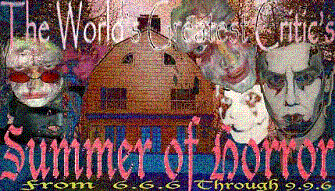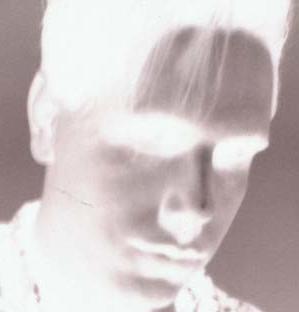Friedrich Wilhelm Murnau's influential 1922 Horror Classic Nosferatu was not the first Dracula adaptation made for the Silver Screen. That distinction goes to 1921's Drakula Halála (or Dracula's Death). However, that now-lost Hungarian picture owed only its name to Bram Stoker's classic. Nosferatu was the first ever true adaptation of Stoker's great epistolary. Ironically, though the title monster is still probably the closest representation of Stoker's described demonic villain, the use of the name "Dracula" (amongst others) was originally denied to Murnau. In an early 20th century version of the Napster copyright hearings, Nosferatu's fathers and mothers were taken to court by the widow of Bram Stoker (who had died in 1912). Undaunted, Murnau and company kept the original plot, now credited to screenwriter Henrik Galeen but changed the names of all the characters. Count Dracula himself became Graf Orlok, Jonathan Harker became Thomas Hutter, Mina Harker became Ellen Hutter and even old Renfield was given the business and changed to Knock.

|


Part of the 2006 Summer of Horror!





|
Many DVD and Video Releases from today have restored the names (mostly) to their novel counterparts, and the 1979 Remake also keeps Stoker's original character names. However, for Murnau, at the time, it was change or bust.
Thank God he chose change, because Nosferatu, eine Symphonie des Grauens ("A Symphony of [the] Horror") is quite simply one of the best Vampire movies ever made... indeed, it's one of the best horror movies ever made... indeed, it's one of the best silent movies ever made... indeed, it's among the best films ever made.
To be certain, much of its majesty and mastery might not appear to be immediately visible to viewers weaned on the current crop of horror films. As seen from generations after its creation, Nosferatu may seem over-acted (it is a silent film) and with so many imitators, its ground-breaking nature might be missed. Looking at Nosferatu as a film fan truly shows what a brilliant director Murnau truly was. So very many of his traits, tricks, imagery and vision have been practically Mimeographed into more films than Carl Sagan could count. Even the iconic Universal Dracula (based more on the stage play than Stoker directly) was undeniably influenced by Nosferatu (which was released in the USA in 1929... right on time for Browning to see it before filming his classic).
If Murnau was a visionary, and he was, his lead actor, the appropriately named Max Schreck (his name means "Scream"), was a genius. For the time no one was scarier than Schreck or his classic portrayal of Orlok. Schreck, actually a normal looking dude without the rat-like make-up and shaved head, brought a wide-eyed and unblinking nightmare to the role of our most famous Vampire (by any name). With his lanky frame, stiff gait, long fingers tipped with claws, pointed ears, thick and sharp eyebrows, huge, frightening eyes, long predatory nose, death-white visage and two pointed teeth, right up front, Schreck's Orlok is probably the most frightening screen villain of his day and beyond. There is nothing suave or seductive about this count. He is a walking nightmare. And although this look is not the one Stoker detailed in his novel, it's hard to deny that Stoker's vision was one of a hideous creature of the night, which Schreck most certainly is.
By the time we begin our tale, Orlok has already sunk his fangs and claws into the mad Real Estate agent (aren't they all) named Knock (played by Alexander Granach). Though not (yet) the institutionalized madman seen in later portrayals, this Renfield-figure is most certainly a horror to see. Knock sends Thomas Hutter (Gustav von Wangenheim) to Castle Dracula to seal what is quite possibly the most filmed land deal in history. This is much to the chagrin of Hutter's wife Ellen (Greta Schröder), who spends her time pining and seeing horrific visions of a monstrous suitor. At least she's not trapped within the nasty confines of the dusty castle as Thomas soon is. Thomas, like most versions of "Jonathan Harker", scoffs at the legends of Vampires until he's truly face to face and throat to fang with one.
Terrifying dreams and monsters a nation away are one thing, but as Hutter begins to escape and Knock's insanity and blood lust grows to the point that he must be confined to a sanitarium, the Nosferatu himself begins the hungry journey to Bremen, Hutter's own Home-Sweet-Home.
Using cutting edge (for the time) special effects and a camera eye that transcended his generation of film making, Murnau details the now-familiar and always scary sea voyage that the count takes with his legions of rats and his still-kicking rations. Orlok's ghostly visage materializes into frame and vanishes just before he rises from his broken coffin to stalk the deck. All the while Hutter's journey and Ellen's despondent waiting are both chronicled in often breath-taking and always perfectly planned shots.
Any Dracula fan has a good idea where this is going, and they would mostly be correct. However, Murnau and Galeen are not simply adapting Stoker word for word here. Instead, Nosferatu shows experiments with metaphor and allegory as his arrival in his new home is accompanied by the Plague. The penetrating and reproductive acts of Vampirism are given new and uncomfortable meanings when coupled with the themes of spreading disease. Like most adaptations, Murnau and Galeen have combined and eliminated characters, which might annoy literary purists, but they keep the plot interesting and anything but convoluted. Where the story is going is a surprise to anyone, and is almost as satisfying as that first time you read Dracula.
Nosferatu was made during the height of the German Expressionist movement's classic era, and is often cited as one of the penultimate examples of that symbolic style. Nosferatu never shows any budget limitations. Instead, the use of tunnel-like lens filters, very nice cuts and really surprising special effects for the time make Nosferatu a good-looking, atmospheric and enduring classic. Further, Murnau's use of light and shadow, architecture as scenery and a still stunning Silhouette Effect (mostly of Schreck's character approaching his prey) makes for a thoroughly nightmarish experience. The film making tools have improved over the years, as the sensibilities and expectations of audiences have changed. However, looking at Nosferatu from any era and seeing what these talented people made with what they had proves this film to be a true milestone, still stunning to look at today.
Vampire movies, even Dracula Movies, have had more appearances on the landscape of popular culture and film than Where's Waldo. The prerequisite striking themes and deep horrific images of darkness and contrasted light owe so very much of their essence to the films of this era, especially Nosferatu. Four and One Half Stars out of Five for Nosferatu, eine Symphonie des Grauens, the silent, suggestive, expressionistic and chilling Vampire tale that cruelly tutored the rest. When the monster comes a-calling and you're ready to saturate yourself with all things Dracula, from the Universal horror flicks to the Hammer remakes to the 1990's Coppola revival to... well, even that one episode of Buffy the Vampire Slayer known as "Buffy vs. Dracula", it's important that you not only don't forget Nosferatu but start here first. Watch your back for plague carrying rats, they could be the harbinger of something more batty to come. I'll see you in the next reel... and if not... you suck! Bite me!



 1/2
1/2


